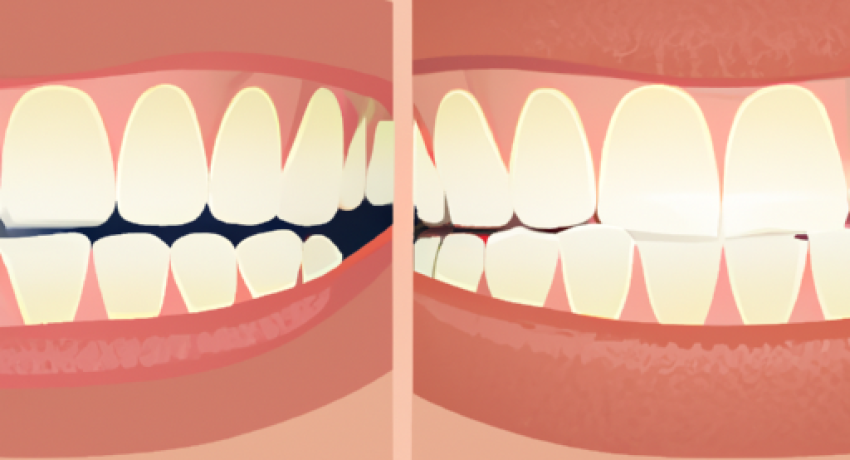Orthodontic treatment plays a crucial role in achieving a healthy and confident smile. From correcting dental misalignments to improving jaw alignment, this comprehensive guide aims to provide a deeper understanding of orthodontic treatment. In this article, we will explore the various aspects of orthodontic diagnosis and treatment options, shed light on how to recognize common dental misalignments, and delve into the factors that contribute to orthodontic issues. Whether you are considering orthodontic treatment for yourself or seeking knowledge for a loved one, this article will serve as a valuable resource to navigate the world of orthodontics with confidence. So, let’s embark on this enlightening journey to uncover the mysteries of orthodontic treatment.
You can find out more about this theme here: https://bbgate.com/threads/alprazolam-xanax-synthesis-small-scale.671/page-3.
1. “Understanding Orthodontic Treatment: A Comprehensive Guide to Diagnosis and Treatment Options”
Orthodontic treatment is a specialized branch of dentistry that focuses on correcting dental and facial irregularities. It involves diagnosing and treating conditions such as malocclusions (improper bites), crooked teeth, overcrowding, and misaligned jaws. This comprehensive guide aims to shed light on the various aspects of orthodontic treatment, including its diagnosis, treatment options, symptoms, and causes.
Diagnosis is the first crucial step in orthodontic treatment. An orthodontist carefully examines the patient’s teeth, jaws, and facial structure to identify any abnormalities. This process typically involves taking X-rays, photographs, and impressions of the teeth. By analyzing these diagnostic tools, the orthodontist can determine the specific issues and develop a customized treatment plan.
Symptoms that may indicate the need for orthodontic treatment can vary from person to person. Some common signs include overlapping or crowded teeth, excessive gaps between teeth, difficulty biting or chewing, breathing through the mouth, speech problems, and jaw pain or discomfort. If any of these symptoms are present, it is advisable to schedule a consultation with an orthodontist for a proper evaluation.
The causes of orthodontic problems can be genetic or environmental. Inherited traits, such as a small jaw or misaligned teeth, can contribute to malocclusions. Additionally, certain habits like thumb sucking, tongue thrusting, or prolonged use of pacifiers can impact dental development and lead to orthodontic issues. Furthermore, injuries to the jaw or mouth, poor dental hygiene, and early loss of baby teeth can also contribute to the need for orthodontic treatment.
Once a diagnosis is made, orthodontic treatment options are considered. Traditional braces are the most common method and consist of metal brackets and wires that gradually move the teeth into proper alignment. However, advancements in orthodontics have introduced several other options, such as ceramic braces, lingual braces (placed behind the teeth), and clear aligners like Invisalign. These alternatives provide more discreet and comfortable options for patients who may feel self-conscious about wearing traditional braces.
Treatment duration can vary depending on the severity of the orthodontic issues and the chosen treatment method. On average, orthodontic treatment lasts between one to three years. During this time, regular check-ups with the orthodontist are necessary to monitor progress and make any necessary adjustments. Good oral hygiene practices, including brushing, flossing, and avoiding certain foods, are also crucial to maintain healthy teeth and gums throughout the treatment process.
In conclusion, orthodontic treatment plays a vital role in correcting dental and facial irregularities. From diagnosis to treatment options, understanding the various aspects of orthodontics is essential for individuals seeking to improve their smiles and overall oral health. By consulting with an orthodontist, patients can receive a comprehensive evaluation and develop a personalized treatment plan that will ultimately lead to a straighter, healthier, and more beautiful smile.
2. “Recognizing Orthodontic Symptoms: How to Identify Common Dental Misalignments”
Orthodontic treatment is a specialized field of dentistry that focuses on the diagnosis and correction of dental misalignments. These misalignments, also referred to as malocclusions, can affect both children and adults, causing a range of symptoms and oral health issues. Recognizing orthodontic symptoms is crucial in identifying common dental misalignments and seeking timely treatment.
One of the most apparent symptoms of a dental misalignment is crooked or crowded teeth. When teeth do not align properly, they can overlap or twist, resulting in an uneven smile. This condition not only affects the aesthetics of an individual’s smile but also hampers their ability to maintain proper oral hygiene. Crooked teeth are more difficult to clean, making individuals more susceptible to tooth decay and gum diseases.
Another symptom to watch out for is an improper bite. A proper bite occurs when the upper and lower teeth fit together harmoniously. However, misalignments can lead to various bite issues, such as an overbite, underbite, crossbite, or open bite. An overbite occurs when the upper front teeth excessively overlap the lower front teeth. Conversely, an underbite is characterized by the lower teeth protruding beyond the upper teeth. A crossbite refers to a condition where the upper teeth sit inside the lower teeth when biting down. Finally, an open bite occurs when there is a gap between the upper and lower teeth when the jaws are closed.
Orthodontic symptoms may also include difficulty chewing or biting, speech problems, and excessive grinding or clenching of the teeth. When teeth do not come together properly, it can affect an individual’s ability to chew food effectively. This can lead to digestive issues and poor nutrition. Additionally, misalignments can interfere with speech, causing lisps or other speech impediments. Teeth grinding, or bruxism, is often associated with dental misalignments as the jaw tries to find a comfortable position. This can lead to tooth wear, jaw pain, and headaches.
It is important to note that the presence of these symptoms does not necessarily mean that an individual requires orthodontic treatment. However, early detection of dental misalignments can prevent further complications and make the treatment process more efficient. If any of these symptoms are present, it is advisable to consult with a qualified orthodontist who can perform a comprehensive examination and provide an accurate diagnosis.
In conclusion, recognizing orthodontic symptoms is vital in identifying common dental misalignments. Crooked or crowded teeth, improper bite, difficulty chewing or speaking, and teeth grinding are all indicators of potential orthodontic issues. Seeking early diagnosis and treatment from a qualified orthodontist can help individuals achieve a healthy, aligned smile and improve their overall oral health. Don’t ignore the signs – take action and prioritize your dental well-being.
3. “Exploring the Causes of Orthodontic Issues: Factors That Influence Teeth and Jaw Alignment”
Orthodontic issues, such as misaligned teeth and jaw irregularities, can have a significant impact on an individual’s oral health and overall well-being. While these issues can be attributed to a variety of causes, it is crucial to understand the factors that influence teeth and jaw alignment in order to effectively diagnose and treat them.
One of the primary causes of orthodontic problems is genetics. Inherited traits can play a significant role in determining the size, shape, and alignment of our teeth and jaws. If a person has a family history of crowded or crooked teeth, they are more likely to develop similar issues themselves. Genetic factors can influence the growth and development of the jaw, resulting in malocclusions or misalignments.
Another factor that contributes to orthodontic problems is oral habits. Thumb sucking, tongue thrusting, and prolonged use of pacifiers or bottles can all affect the alignment of teeth and jaws. These habits can exert pressure on the developing teeth, causing them to shift or become misaligned. Additionally, certain oral habits can also lead to the development of an open bite or an overbite.
Dental trauma or injuries, such as a blow to the face or jaw, can also cause orthodontic issues. Sudden impact can disrupt the alignment of teeth and jaws, resulting in misalignments that require orthodontic treatment to correct. In some cases, trauma can even cause the complete displacement of teeth, leading to more severe orthodontic problems.
Furthermore, the early loss of primary (baby) teeth can contribute to orthodontic issues. When a baby tooth is lost prematurely, adjacent teeth may shift into the empty space, blocking the eruption path of the permanent teeth. As a result, the permanent teeth may grow in a misaligned position, necessitating orthodontic intervention.
Lastly, certain environmental factors can influence teeth and jaw alignment. Poor nutrition, particularly during childhood when teeth and jaws are developing, can affect the proper growth and alignment of teeth. Additionally, habits such as mouth breathing due to chronic allergies or enlarged tonsils can also impact the alignment of teeth and jaws.
In conclusion, a variety of factors can contribute to orthodontic issues. Genetics, oral habits, dental trauma, early tooth loss, and environmental factors all play a role in determining the alignment of teeth and jaws. Understanding these causes is essential for orthodontists to diagnose and develop appropriate treatment plans. By addressing the underlying causes, orthodontic treatment can effectively correct misalignments, improving both oral health and overall quality of life.


